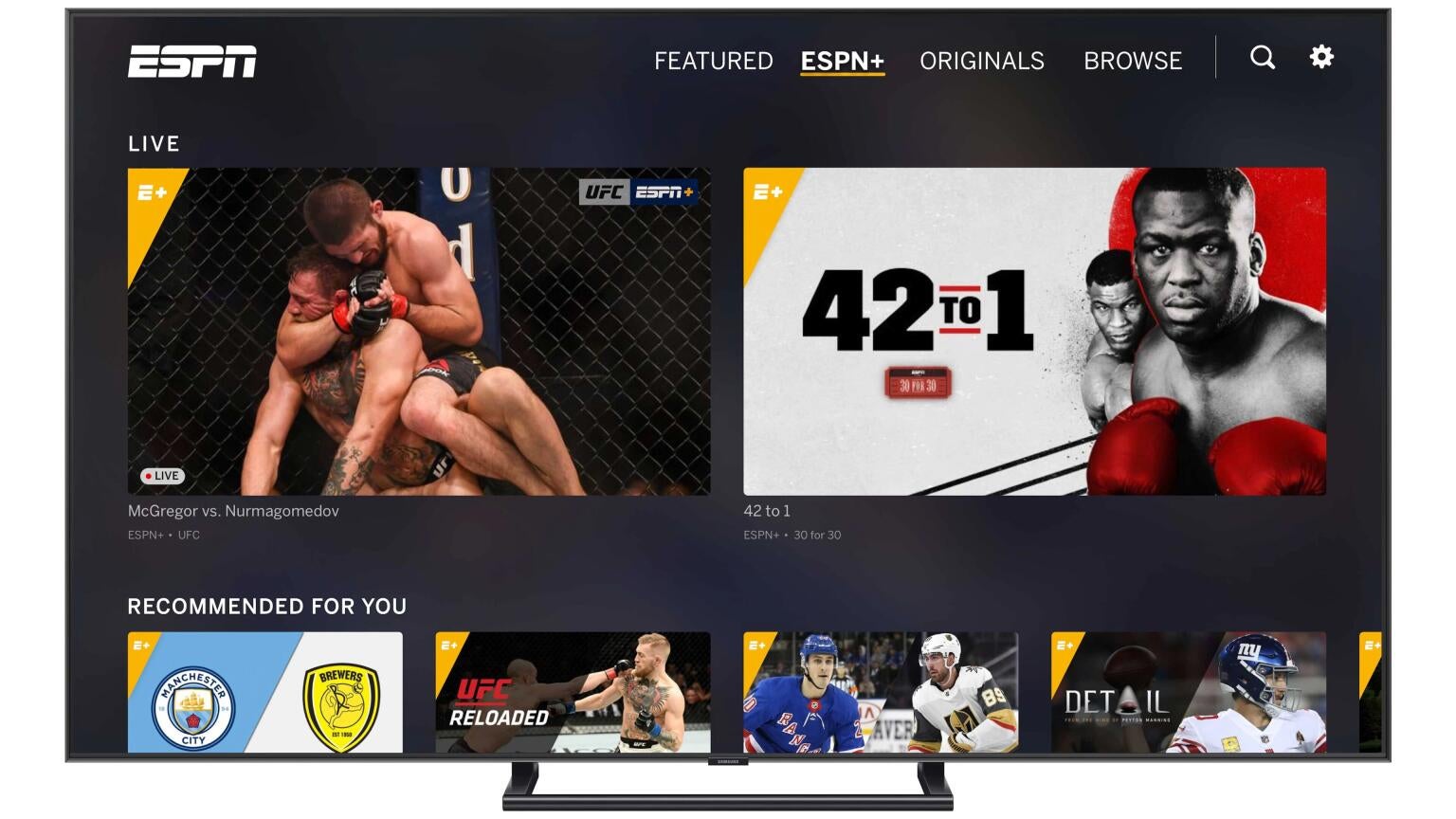ESPN+ Is Quietly Becoming Major Force in Streaming; What It Means for Future of Sports Broadcasting

The transition of sports broadcasts away from linear TV to a streaming-only format may be stuck waiting out the industry’s most dominant leagues like the NFL and their lucrative rights agreements, but major sports streaming platforms are keeping busy in the meantime. That’s especially true of ESPN+. The streamer aired over 22,000 live events in 2021, a volume of available content that helped lead to the platform see 53% year-over-year growth in the previous quarter, showing the viability of a sports-centric streaming platform.
ESPN+’s strategy of offering many different sports — many of which can’t be found on traditional television — and bulking up the number of individual events within a single sport is seeing success. On just one September Saturday, the platform streamed 52 live college football games, ensuring that the combined viewership numbers were robust, even if each individual broadcast only attracted a niche audience.
But quality, not just quantity, is driving the steep growth of ESPN+; the streamer will also offer exclusive coverage of the NFL game between the Denver Broncos and Jacksonville Jaguars in London on Oct. 30. While ESPN and ABC have been longtime partners with the NFL, the league clearly believes in the viability of ESPN+ as it doesn’t just give away its incredibly valuable games to streaming services if it doesn’t believe that the audience will be willing to follow.
While it won’t become the slayer of cable until it can secure exclusive broadcasts rights to a major league, ESPN+ is continuing to tinker and experiment so that when that day comes, the platform is fully optimized. That starts with ensuring the user experience on ESPN+ reminds people of the linear experience that they’re used to.
Something as seemingly benign as the style in which ESPN+ covers events can have a big impact on viewer engagement. One of ESPN+’s golf offerings “PGA Tour Live” has seen a heavily positive response to a “whip-around” mode of coverage in which viewers are taken to the best of what’s happening within an event. It’s similar to how the NFL presents its NFL RedZone channel, and it keeps audiences watching by making sure that everything they’re seeing is exciting TV.
ESPN+ also wants to make sure fans can access the events they’d most want to see without having to dig around through endless menus and content tiles for them. ESPN and ESPN+’s executive director of product management Scott Connor spoke about some of the ways the company is trying to make events more accessible in an interview with Deadline.
“When people are on our website, tiles are one way to navigate across that content,” he said, “but also if you’re looking at a scoreboard, can we light up that scoreboard and link it back to our video system?”
ESPN may not be ready to abandon the linear format in the near future, but long term it seems to be headed in that direction, as multiple network execs have openly discussed moving its full suite of rights to streaming. The pay-TV bundle of linear channels reaches at least 20 million fewer households than it did in 2018, even though 78% of cable viewers rate the channel as a “must-have” to justify a subscription. With ESPN+ continuing to improve its customer optionality and content offerings, the decline of linear ESPN may accelerate even faster.
ESPN+
ESPN+ is a live TV streaming service that gives access to thousands of live sporting events, original shows like Peyton’s Place, the entire library of 30 for 30, E:60, The Last Dance, as well exclusive written analysis from top ESPN insiders. Sports available on ESPN+ include NFL, MLB, NHL, UFC, College Football, F1, Bundesliga, PGA Tour, La Liga, and more.

